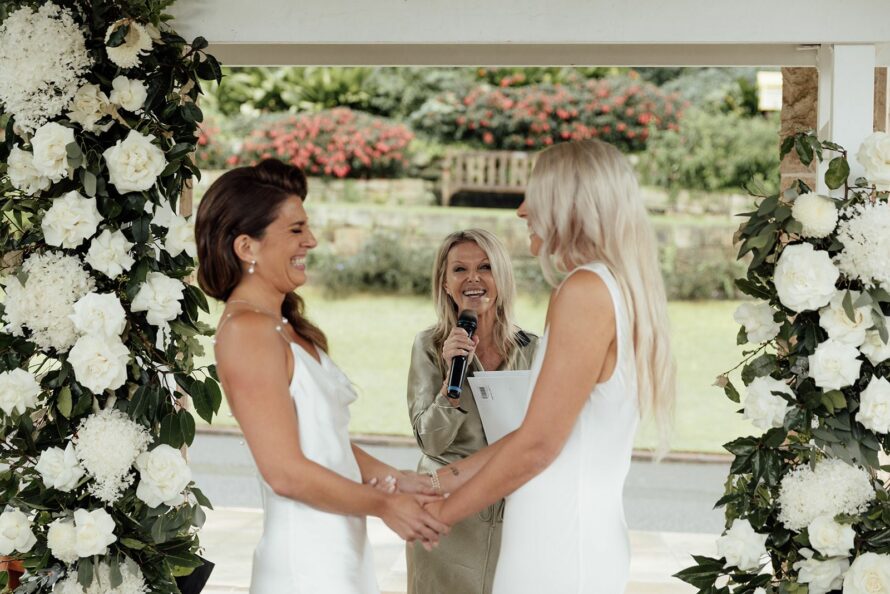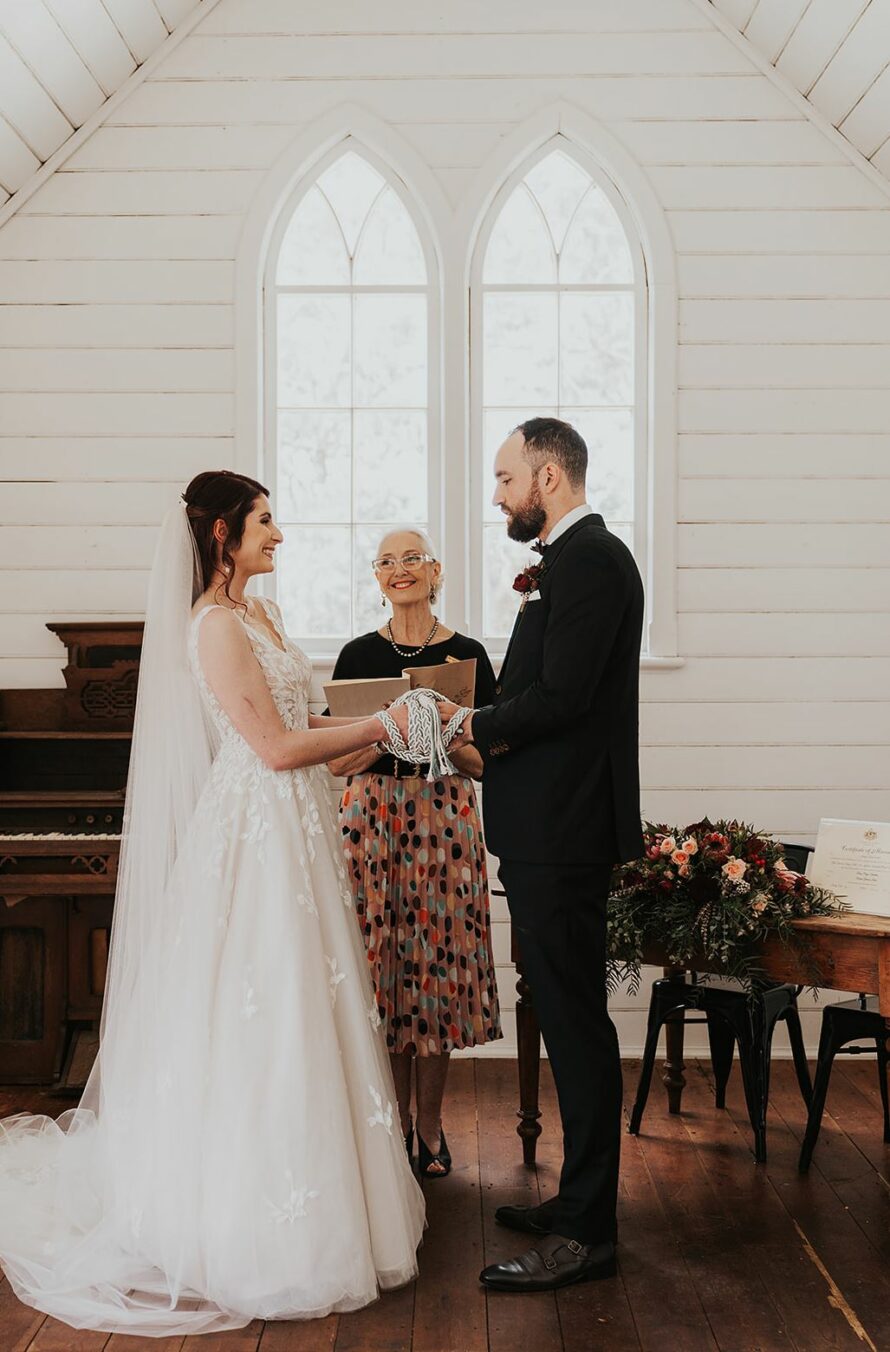If you’re the type that gets dubbed a groomchilla or bridechilla like I am, you may not want to follow every single wedding ceremony tradition that Great Aunt Bethel had at her wedding back in 1925. Maybe you want to do things YOUR way- and that’s fine. We’re here to talk to you about the wedding ceremony and what traditions you can easily break! There are hundreds of little cultural traditions ingrained in us that we may believe HAS to be part of a wedding ceremony, but really, only a couple of parts of the ceremony are legal requirements to get married.
Firstly, we will start with those legal requirements, and then move on to all of the stuff you can happily leave out if you choose to do so!
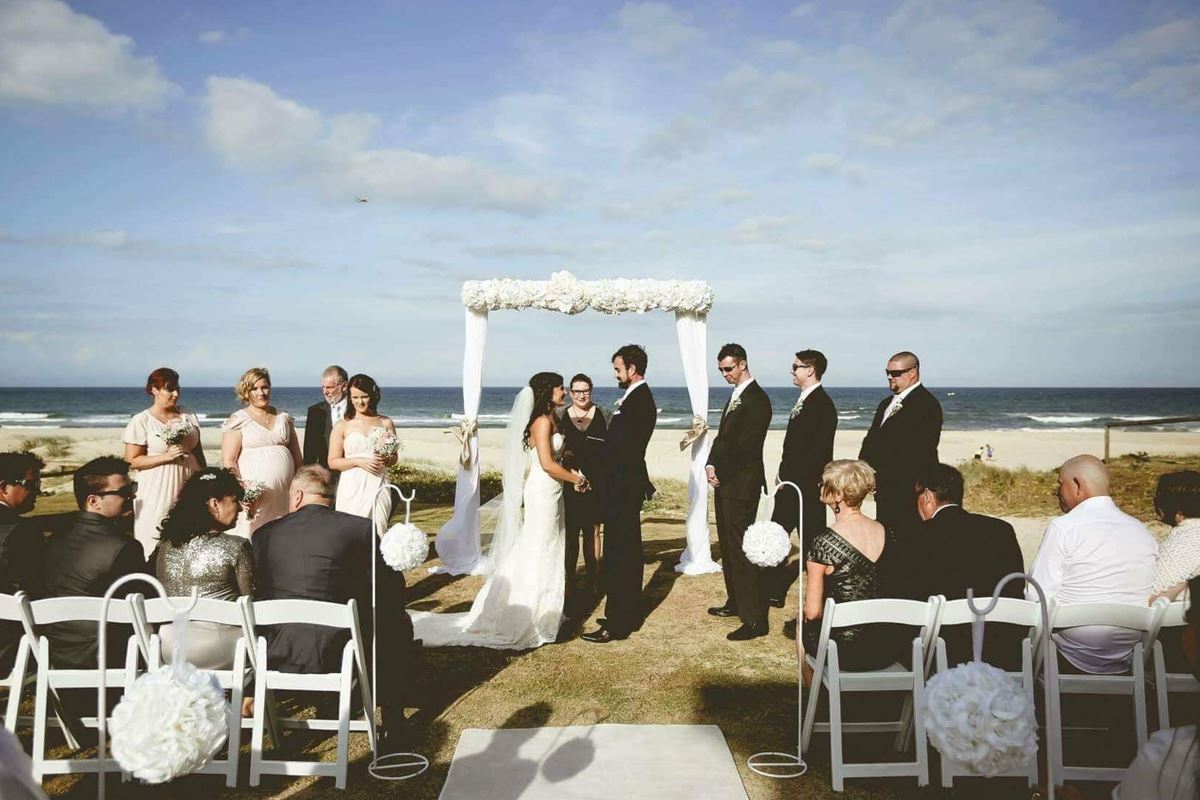
Here’s what you need to have at your wedding ceremony or elopement to get married (legally):
- A celebrant, of course. To ensure this all goes down legally and to solemnise your marriage! They are the only vendor that are truly necessary to have a legal wedding.
- File a NOIM (Notice of Intended Marriage) with your chosen celebrant at least 30 days prior to wedding ceremony, within 18 months of the wedding. If you are divorced or widowed, you must provide proof of how your previous marriage ended. You also need your birth certificate or passport to show the celebrant.
- Fill out the CNI (Certificate of No Impediment to Marriage). This is to declare that you are legally able to marry (i.e not still married to someone else or closely related to your partner or something else similar that would void the marriage).
- You must both be over 18 years of age, or have parents’ consent if either is under 18. You cannot both be under 18.
- Two people over 18 years of age must witness the ceremony and sign the Marriage Register and Certificates.
- The marriage celebrant should identify themselves at the ceremony and say these words: “I am duly authorised by law to solemnise marriages according to law. Before you are joined in marriage in my presence and in the presence of these witnesses, I am to remind you of the solemn and binding nature of the relationship into which you are now about to enter. Marriage, according to law in Australia, is the union two people to the exclusion of all others, voluntarily entered into for life.” (Or words to that effect).
- Each person entering into the marriage must say to the other: “I call upon the people here present to witness that I, Person 1 take you, Person 2, to be my lawful wedded wife/husband.” You may leave out lawful or wedded but not both; you must use one of these words.
- Then, the celebrant, couple and two witnesses must complete paperwork, sign the marriage certificates. And BOOM, married!
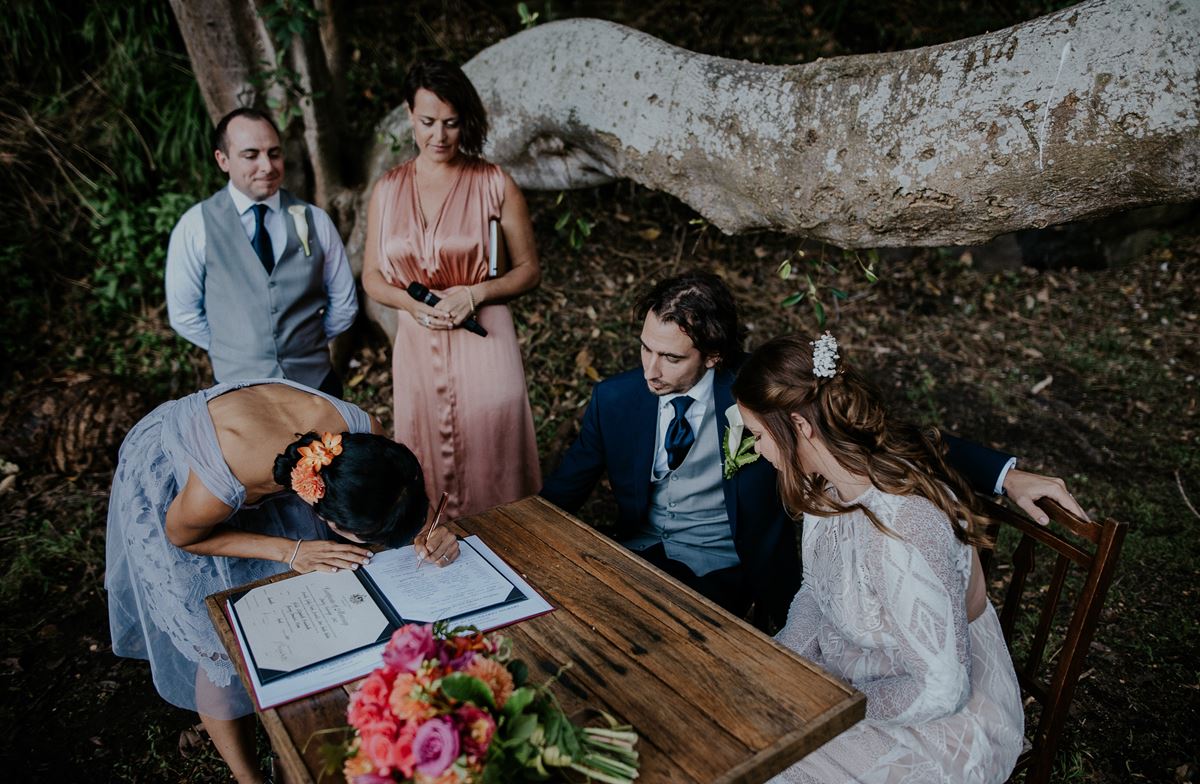
And the wedding ceremony traditions you don’t have to follow:
Objections:
Skip the “dearly beloved” if you wish to and DEF skip the “Should anyone here present know of any reason that this couple should not be joined in holy matrimony, speak now or forever hold your peace”! That has no place in modern ceremonies and belongs in hollywood blockbusters or my personal favourite, Shrek. Save yourself the awkward silence and skip this one. Unless you’re Princess Fiona and you are making a huge mistake by marrying Lord Farquad. And I doubt that is what is going on here. SKIP!
Readings:
Don’t have any favourite stories, poems or bible verses that you’d like read out on your wedding day? No problem, skip them! Many people choose to include readings in the ceremony, but if short and sweet is more your thing, then do that instead. There is no need to waste time. There is a party to get to, after all (it’s your wedding reception, silly)!
Walking down the aisle:
You don’t even have to do this at all if you don’t want to! Or if you do, there are so many alternatives to doing it the traditional way. The couple could enter together, you could enter alone, you go with both parents or a sibling, you could mingle with your guests prior to the ceremony and just get started when you decide to do so! It’s YOUR wedding. Do whatever floats your boats- think about you and your partner and no one else.
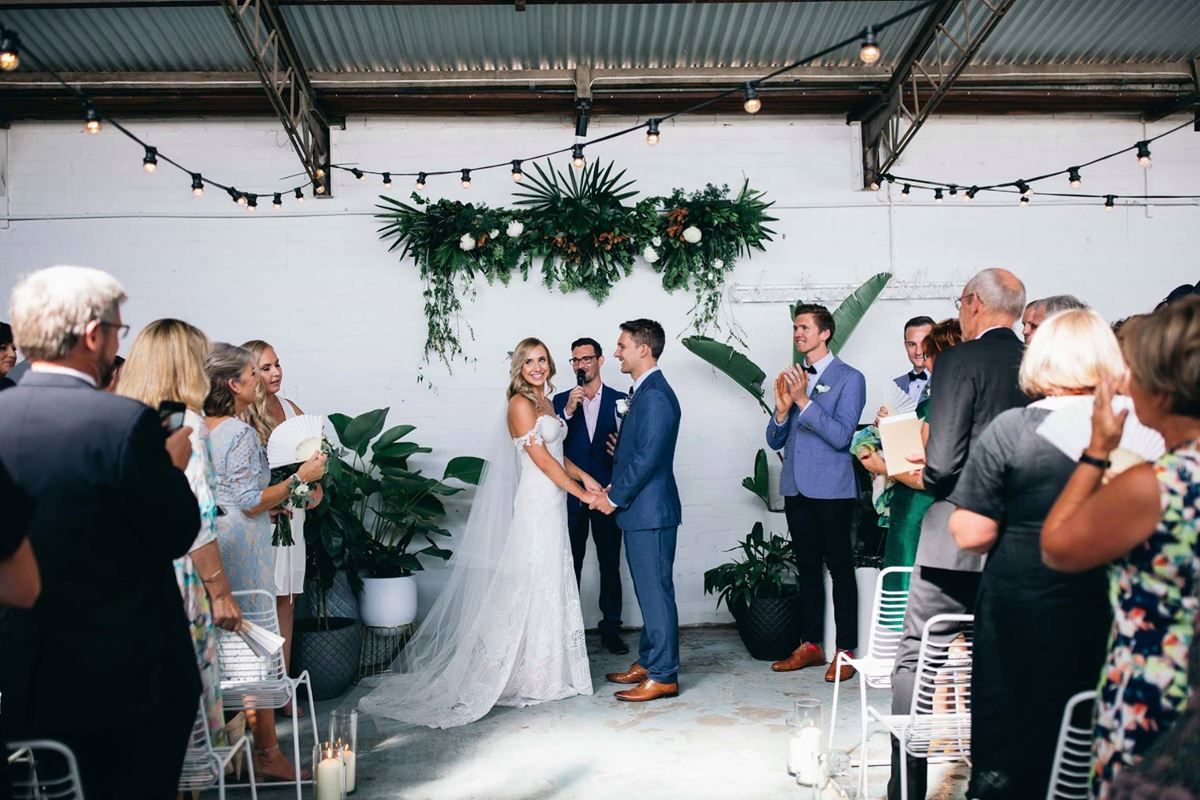
Giving away of the bride/brides:
If you are a bride, you might find this statement incredibly sexist and outdated. But sometimes, the wedding officiant will ask “who gives this woman to be married to this man?”, but it’s not a common occurrence at weddings in modern times, and for good reason. You aren’t property!
Standing on a particular side:
In typical ceremonies, a groom will stand on the right, and the bride on the left, but the extremely old-fashioned tradition holds absolutely no place in modern ceremonies, where all genders can marry. Especially considering the reason the groom used to stand on that side is to keep his right hand free to fight off any enemies during his wedding ceremony. Unlikely to happen in this day and age, that’s for sure! Unless you’re into that whole medieval vibe. If so, then you do you, boo.
Specific witnesses:
For a long time, people have assumed that it has to be your maid of honour and best man that are your witnesses. But that is simply not true! It can be anyone over the age of 18 that is present and able to hear and understand the ceremony. So you can have your siblings, your parents, grandparents, friends, or anyone else be your witnesses.
Kissing:
You actually DO NOT need to kiss. At all. I know, right! What a surprise! You do not need this as part of your wedding ceremony if you don’t want to. It’s 100% up to you.
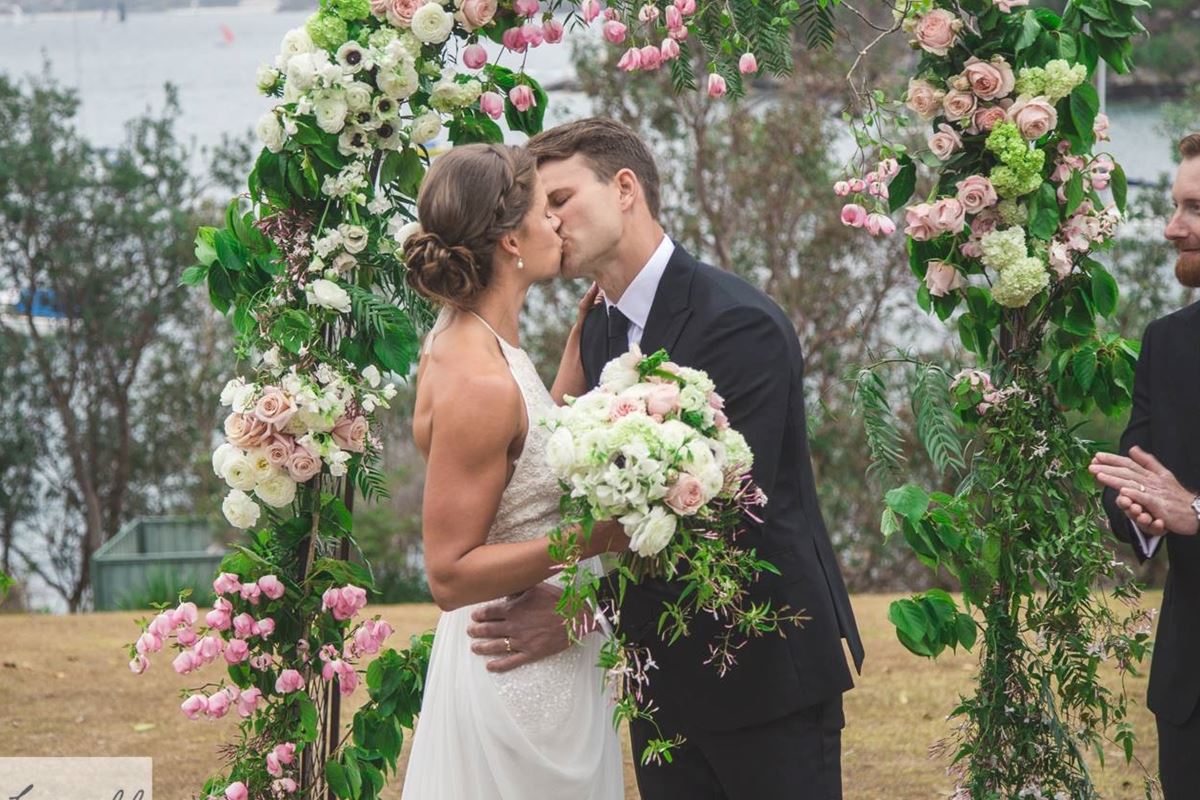
Whatever you end up deciding on for your ceremony, your celebrant will be the one to guide you and ensure that at the end of the day, you’re successfully married (#JustMarried!) And plus, if you want to skip any of the details that they suggest to include in the wedding ceremony, they will have plenty of ideas for alternatives. They marry people for a living, after all!

